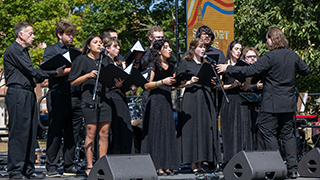Did a Stitch in Time Save the Mudville 9? By Nearly 3-1 Fans Did Not 'Lose Interest' Because of Baseball Work Stoppage
Friday, March 18, 2022

The good news for baseball: by a nearly 3-1 margin, (51 percent to 18 percent) sports fans say the work stoppage did not reduce their interest in MLB. Among self-described "avid fans," the margin for those who said they had not had their interest reduced was 58-24 percent, and among casual fans 49-14 percent. Among the general population, the number was 35-10 percent.
The Seton Hall Sports Poll was conducted March 11-14 across the United States using a national representative sample weighted according to gender, age, ethnicity, education, income and geography based on U.S. Census Bureau figures. The Poll featured 1,528 adult respondents with a margin of error of +/- 3.2 percent.
The results in December of 2021 were not nearly as optimistic for baseball, when a full 30 percent of sports fans claimed reduced interest compared to just 18 percent in this most recent poll. Among avid fans the numbers and contrast were even greater with 44 percent reporting reduced interest in December 2021 compared to just 24 percent now – a 20 point drop. Among the general population, the reduced interest number dropped from 19 percent (December) to 10 percent (now).
"Sometimes a stitch in time really can save nine," said Professor Charles Grantham, Director of the Center for Sport Management within Seton Hall's Stillman School of Business, which sponsors the Poll. "The numbers show that Major League Baseball needed to get this done and did so without a moment to spare. The owners seemingly know that there is too much competition for viewers, both within sports and without, to risk the fans and sponsor’s interest. And the players clearly wanted to play and earn their full salaries – as evidenced by them outvoting their own negotiating committee."
Who to Blame?
Asked who they blamed more for the labor disagreement in MLB, a very small percentage
placed the blame on players: 6 percent of the general population, 9 percent of sports
fans, 12 percent of avid fans and 7 percent of casual fans. Owners, on the other hand,
received more blame by 23 percent of the general population, 28 percent of sports
fans, 34 percent of avid fans, and 26 percent of casual fans. Most blame, however,
went for both, owners and players together, which increased to 30 percent of the general
population, 39 percent of sports fans, 38 percent of avid fans and 39 percent of casual
fans.
What if There Was No Baseball Season?
All was not, however, rosy for baseball. The majority of sports fans said they would
not be bothered or much bothered at all if there were no Major League Baseball played
in 2022. Respondents were asked if "an agreement was not reached and there was no
MLB season at all, how much would you be bothered?" An alarming 55 percent of sports
fans, 39 percent of avid fans, 62 percent of casual fans and 71 percent of the general
population said they would not really be bothered, or not at all bothered.
Still America's Pastime?
Long known as "America's National Pastime," baseball has in recent years decreased
in popularity as measured in game attendance and television ratings, especially when
compared to football. However, Americans, especially among the older demographic,
still see baseball as America's National Pastime.
When asked "what do you consider America's national pastime," despite its overwhelming viewership advantage, football barely edged baseball across the board, with 38-36 percent among the general population in favor of football for the honor, 47-36 percent among sports fans, 49-39 percent among avid sports fans, and 45-35 percent among casual fans.
Baseball, however, enjoyed the advantage among the older demographic. Among those aged 35-54 it was baseball by 39-33 percent, and among those 55 and over, it was baseball by 42-38 percent. For those aged 18-34, however, it was football by 45-24 percent.
Questions with charted breakdowns below; an online version of this release may be found here.
Categories: Athletics, Business






